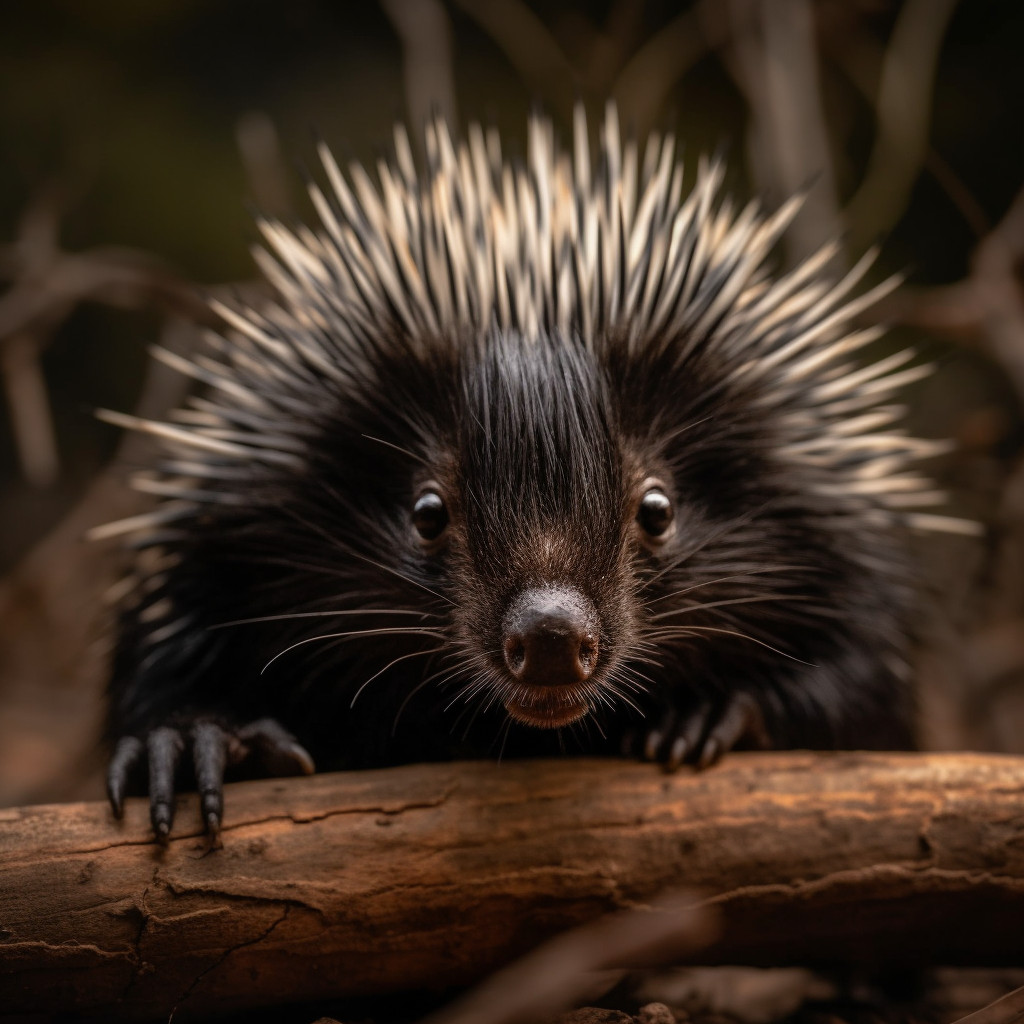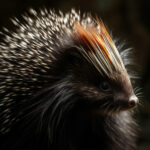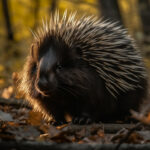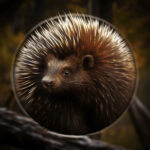Porcupines are fascinating creatures that have captured the curiosity of humans for centuries. Known for their unique appearance and defensive quills, these small mammals are often misunderstood. One question that frequently arises is whether porcupines are smart. In this article, we will explore the intelligence of porcupines and delve into their cognitive abilities. By examining their behavior, problem-solving skills, and social interactions, we can gain a better understanding of just how smart these prickly creatures truly are. So, let’s dive in and uncover the secrets of porcupine intelligence.
Key Takeaways
- Porcupines are intelligent animals that have adapted to survive in their environments.
- They have excellent senses and use their quills as a defense mechanism.
- Porcupines are skilled climbers and can navigate trees with ease.
- They are herbivores and have a varied diet, including bark, leaves, and fruits.
- Despite their spiky appearance, porcupines are generally docile and prefer to avoid confrontation.
Understanding Porcupines: A Brief Overview

A. What are Porcupines?
Porcupines are fascinating creatures that belong to the rodent family. They are known for their unique and impressive defensive mechanisms, which include sharp quills or spines covering their bodies. These quills are actually modified hairs that serve as a formidable defense against predators. When threatened, a porcupine will raise its quills, making it difficult for predators to attack without getting a painful reminder to back off.
Porcupines are not only recognized for their defensive abilities but also for their interesting physical characteristics. They have a stocky build, short legs, and a small head. Their bodies are covered in a combination of long, coarse guard hairs and sharp quills. These quills are typically brown or black in color, with white tips, creating a striking appearance.
B. Where are Porcupines Found?
Porcupines can be found in various habitats across the world, including forests, woodlands, and even deserts. They are highly adaptable creatures and have managed to thrive in diverse environments. In North America, porcupines are commonly found in the northwestern regions, where they inhabit forested areas with ample tree cover.
C. Where are Porcupines Native?
Porcupines are native to many parts of the world, including Europe, Asia, Africa, and the Americas. In North America, they can be found from Alaska and Canada down to Mexico. They have also been introduced to other regions, such as New Zealand, where they were brought in the early 20th century to establish a fur industry.
In terms of specific habitats, porcupines are known to inhabit a range of environments. In forested areas, they can be found in both moist and dry regions, adapting to the conditions present. They are also known to inhabit rocky areas, including mountainous regions and even urban environments. Porcupines are highly versatile and can make use of various types of shelter, including tree dens, rock crevices, and even abandoned buildings.
Porcupines are remarkable creatures that have adapted to survive in different environments. Their unique defensive mechanisms and ability to thrive in diverse habitats make them an intriguing subject of study for researchers and wildlife enthusiasts alike. In the following sections, we will delve deeper into the intelligence, behavior, and adaptation of these fascinating animals.
The Intelligence of Porcupines
A. Are Porcupines Smart?
Porcupines are fascinating creatures that inhabit various parts of the world, including forests, woodlands, and even deserts. But when it comes to intelligence, are porcupines smart? Let’s delve into their cognitive abilities and find out.
Intelligence is a complex trait that can be challenging to define and measure in animals. While porcupines may not possess the same level of intelligence as some highly evolved mammals like dolphins or primates, they do exhibit certain behaviors that suggest a level of cognitive ability.
B. How Smart are Porcupines?
Porcupines have adapted to their environment in remarkable ways. They possess a set of unique traits and survival skills that enable them to thrive in their natural habitats. While their intelligence may not be on par with that of humans, they display a remarkable ability to navigate their surroundings and solve problems.
One of the notable characteristics of porcupines is their excellent memory. They can remember the locations of food sources, safe hiding spots, and even the layout of their territory. This memory allows them to navigate their habitat with ease and avoid potential dangers.
Porcupines also exhibit impressive problem-solving skills. For example, when faced with a predator, they have the ability to use their quills as a defense mechanism. These sharp, barbed quills can be raised and lowered at will, providing an effective deterrent against would-be attackers.
Furthermore, porcupines are known to be skilled climbers. They can navigate trees and branches with agility, using their strong claws and prehensile tails for balance. This ability not only helps them find food but also provides them with a safe refuge from predators.
C. Are Porcupine Fish Smart?
It’s important to note that porcupine fish, also known as pufferfish, are a different species altogether. While they share a similar name, porcupine fish belong to the family Tetraodontidae and are found in marine environments. They are known for their ability to inflate their bodies when threatened, turning themselves into spiky balls to deter predators.
Porcupine fish, like their land-dwelling counterparts, exhibit certain behaviors that can be interpreted as signs of intelligence. They have been observed using tools, such as rocks, to create nests for their eggs. This behavior demonstrates a level of problem-solving and adaptability.
In conclusion, while porcupines may not possess the same level of intelligence as some other animals, they exhibit a range of behaviors that suggest a level of cognitive ability. Their memory, problem-solving skills, and adaptability to their environment all contribute to their survival and success in the wild. Porcupines, both on land and in the sea, are fascinating creatures that continue to captivate researchers and wildlife enthusiasts alike.
The Social Behavior of Porcupines

Porcupines are fascinating creatures that inhabit various habitats across the globe. In this section, we will explore the social behavior of porcupines, including their interactions with other porcupines and their communication methods.
A. Are Porcupines Social?
When it comes to social behavior, porcupines are not known for being highly social animals. Unlike some other mammals that live in groups or herds, porcupines are generally solitary creatures. They prefer to live alone or in small family groups, consisting of a mother and her offspring.
Porcupines are primarily nocturnal animals, which means they are most active during the night. During the day, they seek shelter in dens or hollow trees to rest and avoid predators. This solitary lifestyle allows them to have their own space and resources without the need for constant social interaction.
B. Interaction with Other Porcupines
While porcupines may not be highly social, they do have some interactions with other porcupines, especially during the mating season. Male porcupines will compete for the attention of females, engaging in behaviors such as vocalizations, scent marking, and physical displays.
Once a female porcupine is ready to mate, she will attract potential mates by releasing pheromones. Male porcupines will then engage in a courtship ritual, which involves vocalizations and physical contact. However, after mating, the male porcupine typically leaves, and the female is left to raise the offspring on her own.
C. Communication Methods in Porcupines
While porcupines may not be social in the traditional sense, they still rely on communication to navigate their environment and interact with other porcupines. They use a combination of vocalizations, body language, and scent marking to convey information.
Vocalizations: Porcupines produce a variety of vocalizations, including grunts, growls, and cries. These sounds can serve as a warning to potential predators or as a means of communication between individuals.
Body Language: Porcupines also use body language to communicate. They may raise their quills as a warning sign to predators or flatten them against their body to appear less threatening. Additionally, they may use postures and movements to signal their intentions or establish dominance.
Scent Marking: Porcupines have scent glands located on their feet and tail. They use these glands to mark their territory and communicate with other porcupines. By leaving scent trails, they can convey information about their presence and reproductive status.
In conclusion, while porcupines may not be highly social animals, they still engage in some level of interaction and communication with other porcupines. Understanding their social behavior and communication methods provides valuable insights into the fascinating world of these unique creatures.
The Unique Adaptations of Porcupines
A. What are Porcupine Adaptations?
Porcupines are fascinating creatures that have evolved a range of unique adaptations to survive in their natural habitats. These adaptations help them navigate their environment, find food, and defend themselves against predators. Let’s explore some of the remarkable adaptations that make porcupines such interesting animals.
-
Spines for Protection: One of the most well-known adaptations of porcupines is their spiky coat of quills. These sharp spines serve as a formidable defense mechanism against potential threats. When threatened, a porcupine will raise its quills, making itself appear larger and more dangerous. If an attacker persists, the porcupine can launch its quills, which are loosely attached and easily detachable, into the predator’s skin. This defense mechanism is highly effective in deterring most predators and ensuring the porcupine’s safety.
-
Nocturnal Lifestyle: Porcupines are primarily nocturnal animals, meaning they are most active during the night. This adaptation allows them to avoid many diurnal predators and reduces competition for resources. By being active at night, porcupines can forage for food without the risk of encountering larger predators that are more active during the day.
-
Strong Claws and Teeth: Porcupines have strong claws and teeth that enable them to climb trees and access food sources that other animals may not be able to reach. Their sharp claws provide excellent grip, allowing them to navigate through the branches with ease. Additionally, their teeth are specially adapted for gnawing on bark, twigs, and other tough plant materials, which form the bulk of their diet.
B. The Role of Spines in Porcupines’ Survival
The spines of porcupines play a crucial role in their survival. These sharp quills are an effective defense mechanism that helps protect porcupines from predators. When threatened, a porcupine will raise its quills, making it appear larger and more intimidating. This display often deters predators from attacking, as the quills can cause severe pain and injury if they become embedded in the predator’s skin.
Porcupines also have a unique adaptation when it comes to their quills. Contrary to popular belief, porcupines cannot shoot their quills at predators. However, their quills are loosely attached and can easily detach upon contact. When a predator comes into contact with a porcupine, the quills detach and become embedded in the predator’s skin, causing discomfort and pain. This serves as a strong deterrent and teaches predators to avoid porcupines in the future.
C. What are Porcupine Spines Made Of?
Porcupine spines are made of a tough, durable material called keratin. Keratin is the same material that makes up our hair and nails, as well as the horns and hooves of many other animals. It is a protein that provides strength and rigidity to the spines, making them an effective defense mechanism.
The spines of porcupines have a unique structure. Each spine is covered in tiny barbs or hooks that make them difficult to remove once embedded in an attacker‘s skin. These barbs also aid in the penetration of the quills, ensuring that they stay firmly lodged in the predator’s flesh.
In addition to their defensive role, porcupine spines also serve as a form of communication. When a porcupine feels threatened or agitated, it will raise its quills as a warning signal to potential predators or other porcupines. This visual display communicates that the porcupine is ready to defend itself if necessary.
Overall, the unique adaptations of porcupines, such as their spines, nocturnal lifestyle, and strong claws, contribute to their survival in their respective habitats. These adaptations allow porcupines to thrive and navigate their environment with ease, ensuring their continued existence in the wild.
The Defense Mechanisms of Porcupines
Porcupines are fascinating creatures that have developed unique defense mechanisms to protect themselves from predators. In this section, we will explore the various ways in which porcupines defend themselves and survive in the wild.
A. Porcupine Attack: When and Why it Happens
Porcupines are generally peaceful animals and prefer to avoid confrontation. However, they do have the ability to attack when they feel threatened or cornered. It’s important to understand when and why porcupine attacks occur to better appreciate their defensive nature.
-
Threat Perception: Porcupines have a keen sense of hearing and can detect potential threats from a distance. They are most likely to attack when they feel their safety is compromised. This can happen if they are approached too closely or if they sense danger in their surroundings.
-
Protecting Territory: Porcupines are territorial animals and will defend their space if they feel it is being invaded. They may attack to establish dominance or protect their young ones.
-
Self-Defense: When faced with a predator, porcupines have a unique defense mechanism – their quills. These sharp, barbed spines cover their bodies and can be easily raised when needed. When threatened, a porcupine will turn its back towards the predator, exposing its quills as a warning.
B. What are Porcupine Spikes Called?
Porcupines are known for their spiky appearance, but have you ever wondered what these spikes are actually called? Let’s find out!
-
Quills: The spines on a porcupine’s body are called quills. These quills are modified hairs that have a sharp, needle-like structure. They are made of keratin, the same material found in human hair and nails.
-
Quill Anatomy: Each quill is composed of a solid, hollow shaft with a series of barbs or scales along its length. These barbs make it difficult for the quill to be easily removed once it becomes embedded in the skin of a predator.
C. How Porcupines Use Their Spines for Defense
Porcupines have evolved to use their spines as a highly effective defense mechanism. Let’s take a closer look at how they utilize their quills for protection.
-
Quill Erection: When a porcupine feels threatened, it will raise its quills to make itself appear larger and more intimidating. This serves as a warning to potential predators, signaling that an attack could result in painful consequences.
-
Quill Release: If a predator ignores the warning and continues to approach, the porcupine will take defensive action. It can release its quills by forcefully swatting its tail or by making contact with the predator’s body. The quills detach easily and become embedded in the predator’s skin, causing pain and discomfort.
-
Quill Barbs: The barbs on the quills make them difficult to remove. When a predator tries to pull out the quills, the barbs catch on the flesh, causing the quill to become further embedded. This ensures that the predator is more likely to experience prolonged discomfort and potential infection.
Porcupines have evolved these defense mechanisms over time to ensure their survival in the wild. Their ability to effectively use their quills as a means of defense showcases their adaptation and resourcefulness. So, while porcupines may not be considered “smart” in the traditional sense, their defensive strategies demonstrate their intelligence in the realm of survival.
The Ecological Role of Porcupines

Porcupines play a vital role in the ecosystem, contributing to the balance and diversity of their habitats. Let’s explore why these intriguing creatures are important, why they are protected, and what they prey upon.
A. Why are Porcupines Important?
Porcupines are key players in maintaining the health and vitality of forest ecosystems. Here are a few reasons why they are important:
-
Seed Dispersal: Porcupines unwittingly act as gardeners of the forest. As they move through the trees, their quills collect seeds from various plants and carry them to different locations. This helps in the dispersal of seeds, aiding in the regeneration and growth of different plant species.
-
Tree Pruning: Porcupines have a voracious appetite for bark, twigs, and leaves. While this may seem destructive, it actually benefits the forest. By selectively feeding on certain parts of trees, porcupines help to prune and shape them. This pruning stimulates new growth and enhances the overall health of the forest.
-
Habitat Creation: Porcupines create dens in hollow trees or burrows in the ground. These dens provide shelter for a variety of other animals, including smaller mammals, birds, and reptiles. By creating these habitats, porcupines contribute to the overall biodiversity of their ecosystem.
B. Why are Porcupines Protected?
Porcupines are protected in many regions due to their ecological significance and the need to preserve their populations. Here are a few reasons why they are safeguarded:
-
Keystone Species: Porcupines are considered a keystone species, meaning they have a disproportionately large impact on their environment compared to their abundance. Their feeding habits and habitat modifications influence the structure and composition of the forest ecosystem. Protecting porcupines helps maintain the delicate balance of these ecosystems.
-
Indicators of Forest Health: The presence of porcupines in an area can serve as an indicator of a healthy forest ecosystem. Their absence or decline may suggest disturbances such as habitat loss, degradation, or pollution. By protecting porcupines, we indirectly safeguard the overall health of the forest.
-
Ethical Considerations: Many people appreciate the intrinsic value of wildlife and believe in the ethical responsibility to protect and conserve all species. Porcupines, with their unique adaptations and behaviors, are no exception. Protecting these animals ensures their continued existence for future generations to appreciate and study.
C. What are Porcupines Prey?
Porcupines are herbivores, primarily feeding on the inner bark, twigs, and leaves of trees. They have a diverse diet and consume a variety of plant species. Some of the common plants that porcupines prey upon include:
-
Conifers: Porcupines have a particular fondness for coniferous trees such as pine, spruce, and fir. They strip the bark off these trees, often leaving behind characteristic tooth marks.
-
Deciduous Trees: Porcupines also feed on deciduous trees like aspen, poplar, and willow. They consume the inner bark and twigs, which are more nutritious during certain times of the year.
-
Shrubs: Porcupines are known to nibble on shrubs such as raspberry, blackberry, and blueberry. They may also feed on the leaves and stems of various herbaceous plants.
By consuming a diverse range of plant species, porcupines contribute to the overall health and dynamics of forest ecosystems.
In conclusion, porcupines play a significant ecological role as seed dispersers, tree pruners, and habitat creators. Their protection is crucial for maintaining forest health, and their presence serves as an indicator of a thriving ecosystem. By understanding what porcupines prey upon, we gain insight into their dietary preferences and their impact on the plant community. Conclusion
In conclusion, porcupines may not be the first animals that come to mind when we think of intelligence, but they possess a unique set of skills that allow them to thrive in their environments. Their ability to adapt to various habitats, their impressive defensive mechanisms, and their problem-solving abilities all suggest a level of intelligence that should not be underestimated. While they may not be as intelligent as some other animals, such as dolphins or primates, porcupines have evolved to survive and thrive in their own unique way. So, the next time you come across a porcupine, remember that there is more to these prickly creatures than meets the eye.
Frequently Asked Questions
Are porcupines smart?
Yes, porcupines are considered to be quite intelligent. They have shown a good understanding of their environment, problem-solving skills, and have a strong memory which helps them in their survival.
What happens during a porcupine attack?
During a porcupine attack, the porcupine raises and fans out its quills, making itself look larger. If the threat continues, it will charge backwards into the predator, driving its sharp quills into the attacker.
What are porcupine adaptations?
Porcupines have several adaptations that aid in their survival. Their most notable adaptation is their quills, which are used for defense. They also have strong, curved claws for climbing trees and a keen sense of smell to locate food.
What are porcupine spines made of?
Porcupine spines, or quills, are made of keratin, the same protein that makes up human hair and nails. The quills are hollow and have a series of barbs on the end which makes them difficult to remove once embedded.
Where are porcupines found?
Porcupines are found in a variety of environments across North and South America, Africa, Europe, and Asia. They can inhabit forests, deserts, and grasslands, depending on the species.
Why are porcupines important?
Porcupines play a crucial role in their ecosystems. They help in the process of seed dispersal, which aids in forest regeneration. Their feeding habits also control the growth of certain plant species.
Are porcupines social?
Porcupines are generally solitary animals, although they may share dens in the winter for warmth. They are not territorial and have complex communication methods involving sounds and odors.
What are porcupines prey?
Porcupines are herbivores, so they do not prey on other animals. However, they are preyed upon by various predators like owls, eagles, wolves, and big cats, depending on their geographical location.
What are porcupine spikes called?
Porcupine spikes are commonly referred to as quills. These quills are sharp, stiff structures that cover the porcupine’s body and are used mainly for defense.
Are porcupine fish smart?
While there is not a lot of research on the intelligence of porcupinefish, they are known to have survival instincts and defensive mechanisms similar to land porcupines. They puff up and display sharp spines when threatened.




